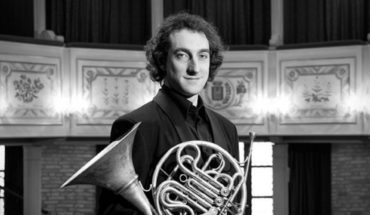Two months after being devastated by fire, Notre Dame today hosts a mass officiated by the Archbishop of Paris, which will be attended by a small number of people because of the danger of being in the lead-contaminated cathedral whose vault is still in danger of collapse.
It will be at 18.00 local time (16.00 GMT) in the chapel of the Virgin, behind the choir, and will attend only thirty people, half ecclesiastical, all in protective helmet, including Monsignor Michel Aupetit, who will officiate a symbolic mass to sign if Notre Give me “keep alive,” said the rector of the temple, Patrick Chauvet.
The event – broadcast on Catholic television KTO – will be a representation of the people working in the works and lay people of the Diocese of Paris; “few people because it is very dangerous,” said the ambassador in charge of international mobilization for Notre Dame, Stanislas de Laboulaye, in a meeting with Spanish press.
The neighborhood and cathedral will have to be cleaned contaminated by the lead that covered the cover and needle of Viollet-le-Duc and melted by the flames that reached 800 degrees of temperature, and from whose origin “there is still no clue” Said.
“Notre Dame de Paris is still in a fragile situation, especially in the vault that has not yet been secured, and can collapse,” Culture Minister Franck Riester said during an interview on Friday on the France 2 network, in which he also said that only received 9% of pledged donations, or EUR 80 million of the 850 million pledged.
Something that, without going into detail, minimized De Laboulaye a day earlier by underlining the inability to assess real economic needs until the state of Notre Dame is known.
Controversies and donations
The diplomat was convinced that the process will begin to have “a military rhythm” once in mid-July the law setting the legal framework for the restoration of the cathedral is passed, with tax exemptions of up to 75% per thousand euros of donation and creates it agency to be coordinated by General Jean-Louis Georgelin, with experience in the Balkan War.
It referred to controversies generated by the bill as the possibility of an exceptional annulment of urban, environmental and heritage standards, as well as “suspicions” by tax exemptions in a country that “has no tradition of patronage.”
Despite this, he remarked that “everything will be paid with private donations and this is a cultural shock for the French.”
For now the bulk of the money is French and American, but donations come from everywhere because Notre Dame is a “world symbol.” In Europe, where there is no tax harmonization, there is a network of foundations (Transactional Giving Europe, TGE) to channel them, and that in the case of Spain there is the Fundación Empresas y Sociedad.
De Labouyade also emphasized that not everything is money, as countries like Chile and Canada have offered wood, Vietnam to their stone carvers or Columbia University (New York) their knowledge of the cathedral, which has 3D milimetrate.
Consolidation and removal of debris
The current phase of the works is of “consolidation” of the structure of the building with “huge beams”, which has forced the removal of the stained glass windows of the nineteenth century in order to pass them, while all the neighbors around the building have been evacuated.
The botbotantes have also been consolidated, essential for maintaining Gothic constructions, and wooden structures have been laid to prevent them from leaning inwards and falling.
One of the biggest problems now, until the three huge holes in the roof are repaired, is the wind, which enters the cathedral and threatens the structure, the diplomat explained.
A plastic guard has been installed on top of the temple to protect the interior from rain and a gigantic net to prevent stones from falling on workers working inside to remove debris with the help of robots.
These machines take them out and deposit them in a tent installed on the esplanade in front of the main facade of the cathedral, where they are inventoried to help the police determine the causes of the fire and the scientists who study its nature and see if they can be re-re use for restoration, said De Laboulaye.
At the end of the consolidation and removal of debris, the removal of the 250-ton scaffold that enveloped the Viollet-le-Duc needle will begin, with whose restoration “problems began” and where the fire began. That operation will take four months.
A long process and some miracles
The precise mode of reconstruction is to be decided, what is clear is that the Venice Charter for the restoration of national treasures will be respected, since Notre Dame and the banks of the Seine are in the Unesco World Heritage Site.
And it is also known that you will have to put weight on the vault because it is necessary to keep the walls straight in the very complex Gothic architecture, which is like a “figure of cards”.
In fact, there were 20 critical minutes on the fateful night of April 15: when the fire approached the bell tower, covered in wood and that if it had burned it would open fallen and with it the main facade and the rest of the cathedral.
Cooling the stones was the best decision, as throwing water over the flames from the sky would have had the effect of “a bombardment, it would have been completely crushed or disintegrated,” according to De Laboulaye.
“This shows the extent to which things we believe are eternal are not,” he mused.
What was also “miraculous,” he added, was that the relics and treasure of Notre Dame, the statues, the altar, the great cross and the Virgin of the fourteenth century were saved.
Before the fire, the cathedral was “wrong.” Two years earlier, the investment needed to restore it was assessed at 50 million euros. Now no one is even able to give a figure.
translated from Spanish: Notre Dame celebrates her first mass after the fire in precarious conditions
June 15, 2019 |





